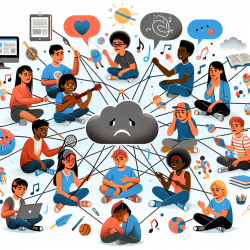Telerehabilitation is emerging as a critical tool in overcoming healthcare disparities, particularly in regions with significant resource constraints. The research article "Telerehabilitation In South Africa – Is There A Way Forward?" by Maurice Mars provides valuable insights into the current state and potential of telerehabilitation in South Africa. Here, we discuss key takeaways and actionable steps for practitioners looking to enhance their skills and outcomes in pediatric therapy.
Current Landscape of Telerehabilitation in South Africa
According to Mars (2011), South Africa faces a significant shortage of health professionals, with only 2.5 physiotherapists and 2 occupational therapists per 100,000 people in public sector hospitals. This shortage is exacerbated by the high burden of disease, particularly HIV/AIDS and tuberculosis, which places immense pressure on the healthcare system. Despite these challenges, the potential for telerehabilitation to address these gaps is promising. The research indicates that while awareness of telerehabilitation is limited, there are pockets of successful implementation, primarily in follow-up care via telephone, fax, or email.
Key Insights for Practitioners
Practitioners can take several steps to leverage the findings of this research to improve their practice:
- Raise Awareness: Increasing awareness about the benefits and capabilities of telerehabilitation among healthcare professionals is crucial. This can be achieved through workshops, seminars, and incorporating telerehabilitation modules in academic curricula.
- Utilize Existing Technologies: Even with limited resources, existing technologies like telephones, email, and Skype can be effectively used for follow-up consultations and support. These tools can bridge the gap between patients and therapists, especially in rural areas.
- Champion Telerehabilitation: Early adopters and those with experience in telerehabilitation should take on the role of champions. By sharing their experiences and outcomes, they can inspire and guide others in the field.
- Collaborate and Network: Forming special interest groups (SIGs) within professional associations can facilitate the sharing of knowledge and resources. This collaboration can lead to the development of guidelines and best practices tailored to local contexts.
Encouraging Further Research
The study highlights a significant gap in the literature on telerehabilitation in Africa. Practitioners are encouraged to engage in research to document and publish their experiences and findings. This will not only contribute to the global body of knowledge but also provide evidence-based practices that can be adopted locally. Potential research areas include:
- Effectiveness of telerehabilitation in different therapeutic domains (e.g., speech therapy, occupational therapy)
- Cost-benefit analysis of telerehabilitation versus traditional in-person therapy
- Patient satisfaction and outcomes in telerehabilitation programs
- Technological barriers and solutions for implementing telerehabilitation in resource-limited settings
Conclusion
Telerehabilitation holds immense potential to improve healthcare delivery in South Africa and similar contexts. By raising awareness, utilizing existing technologies, championing the cause, and engaging in further research, practitioners can significantly enhance pediatric therapy outcomes. To read the original research paper, please follow this link:
Telerehabilitation In South Africa – Is There A Way Forward? 









